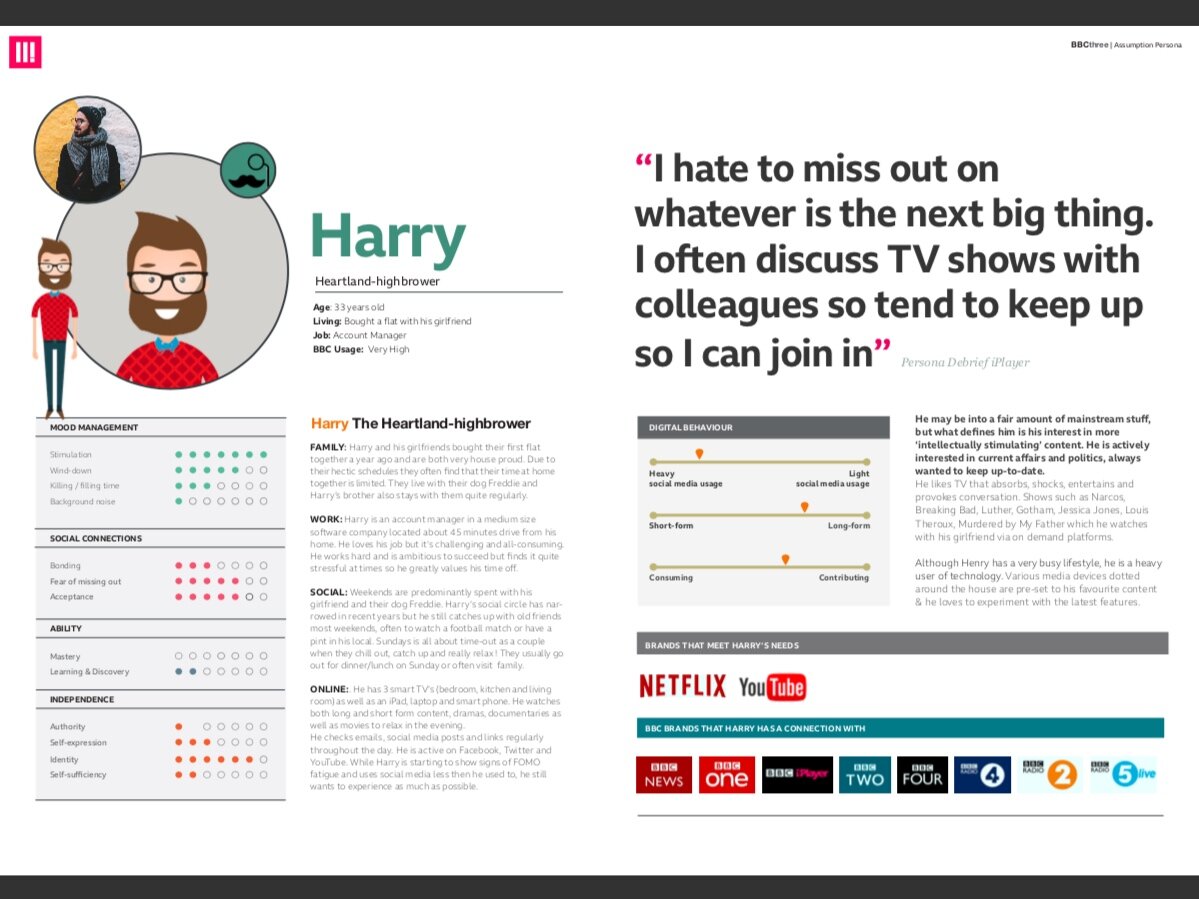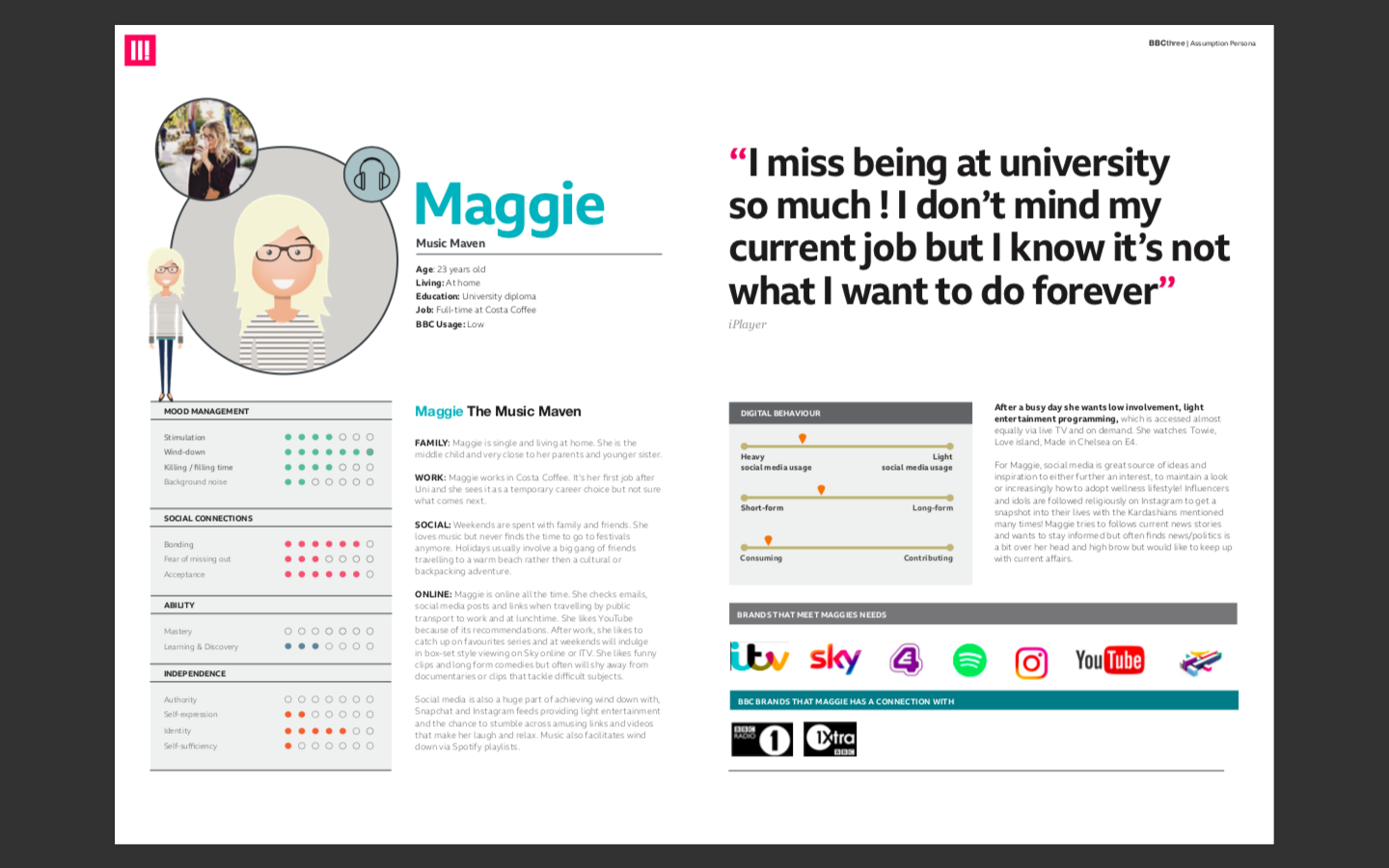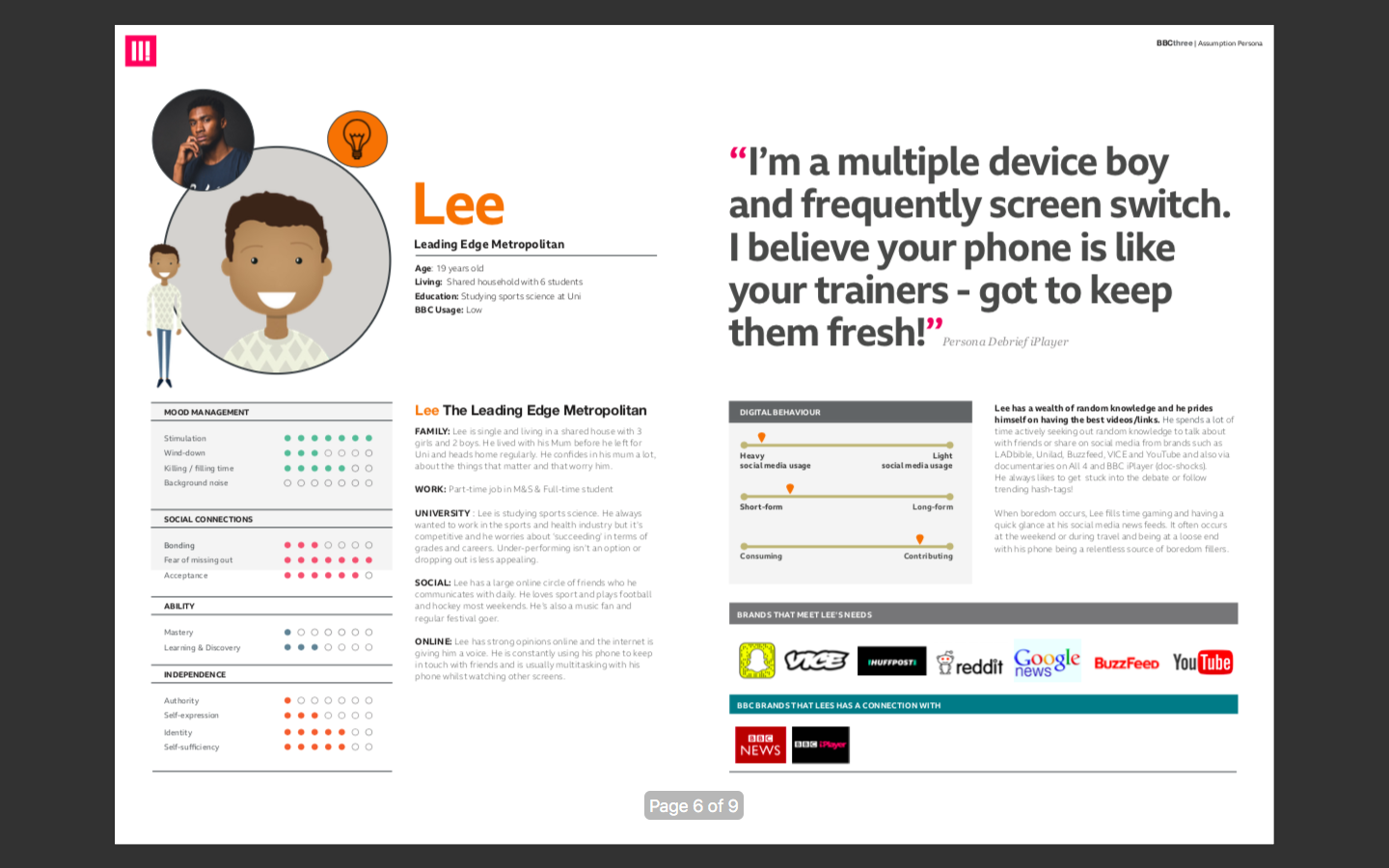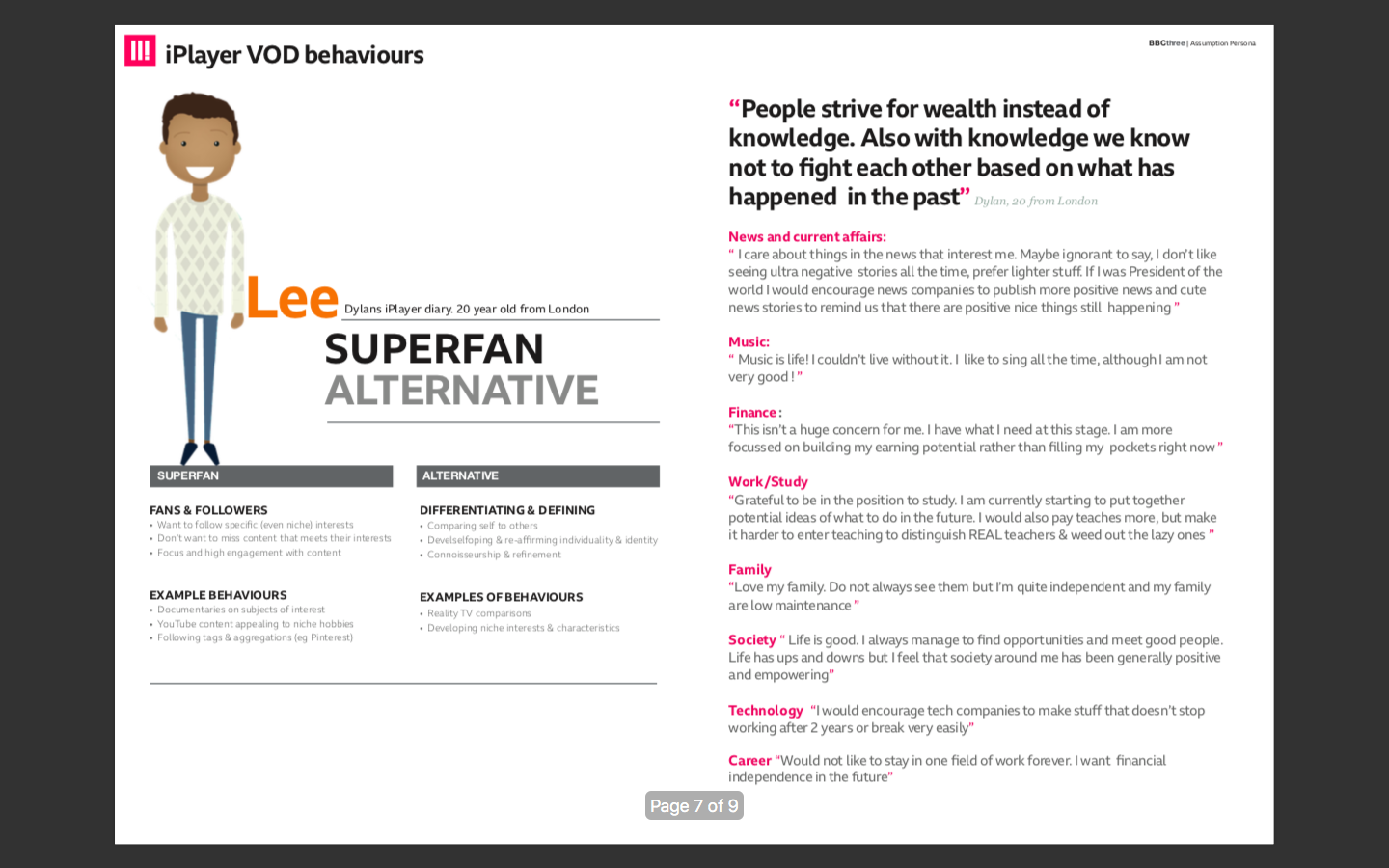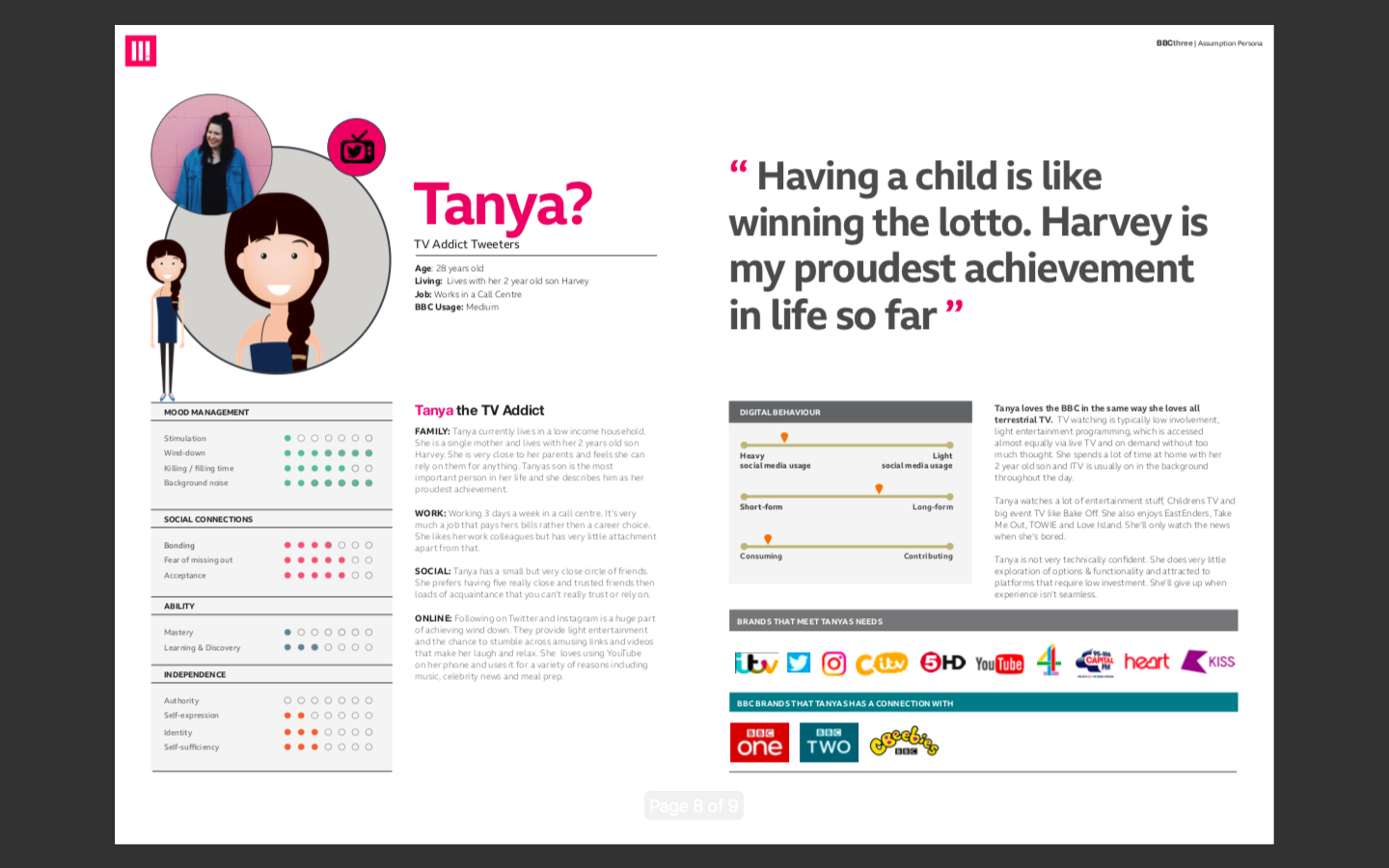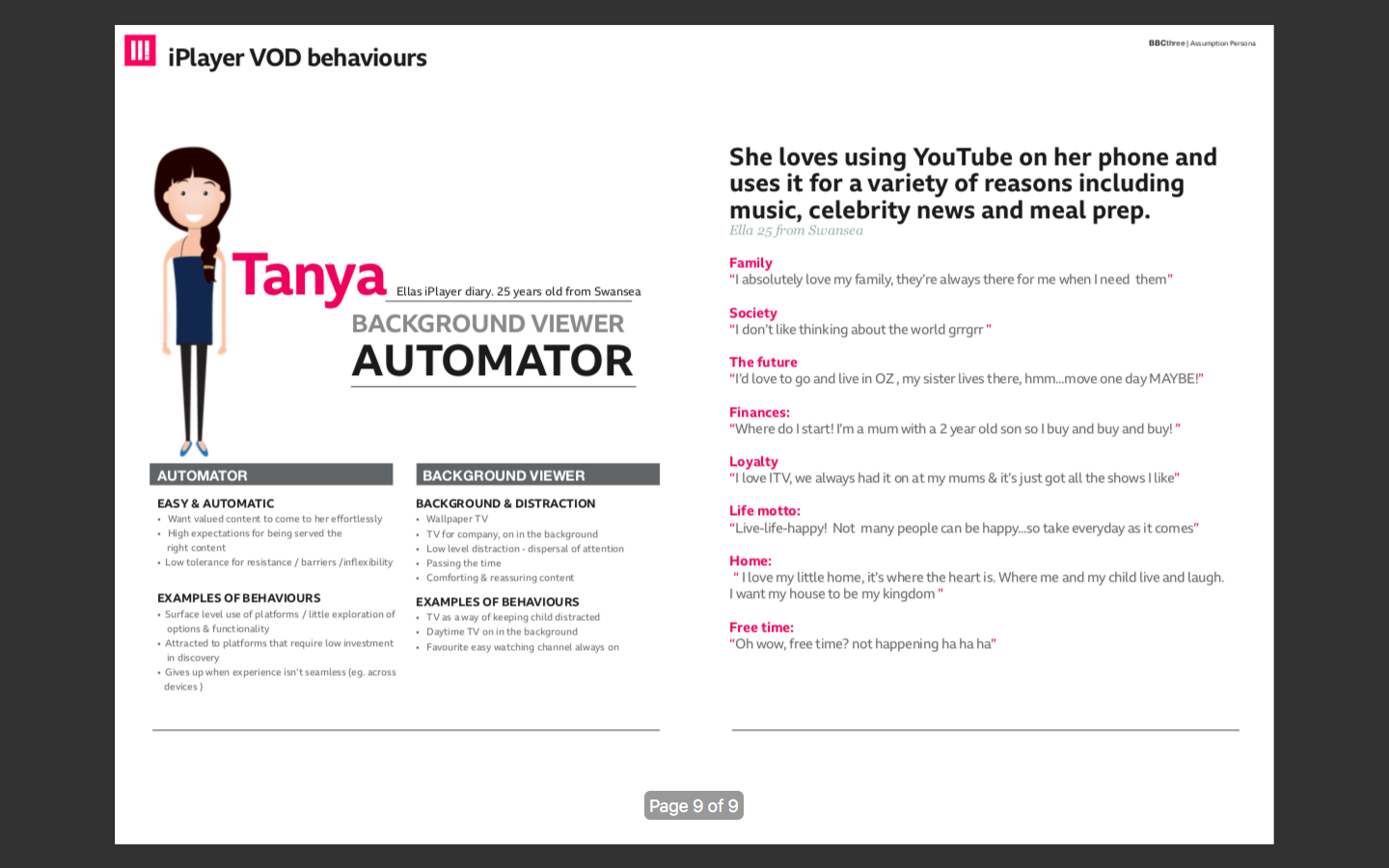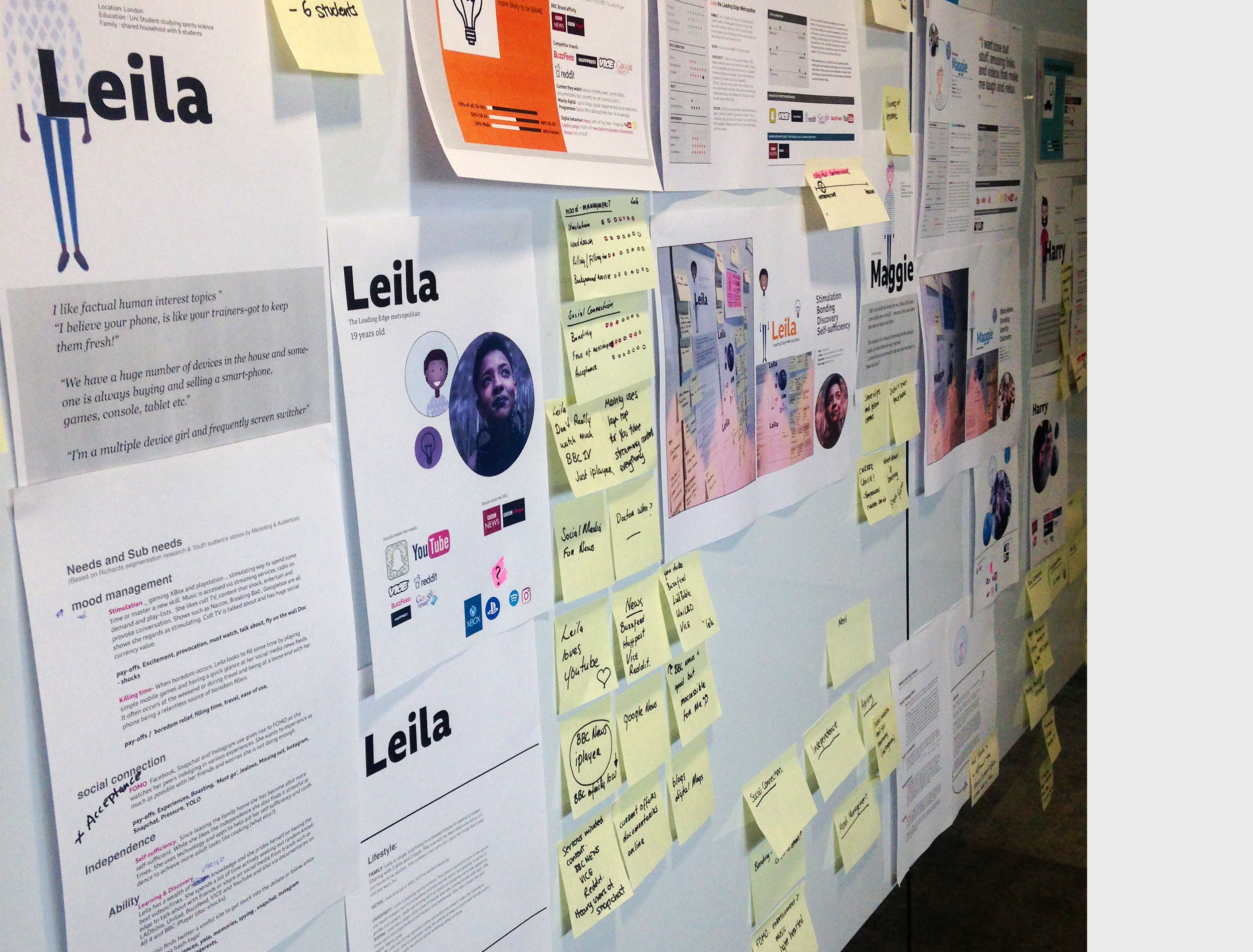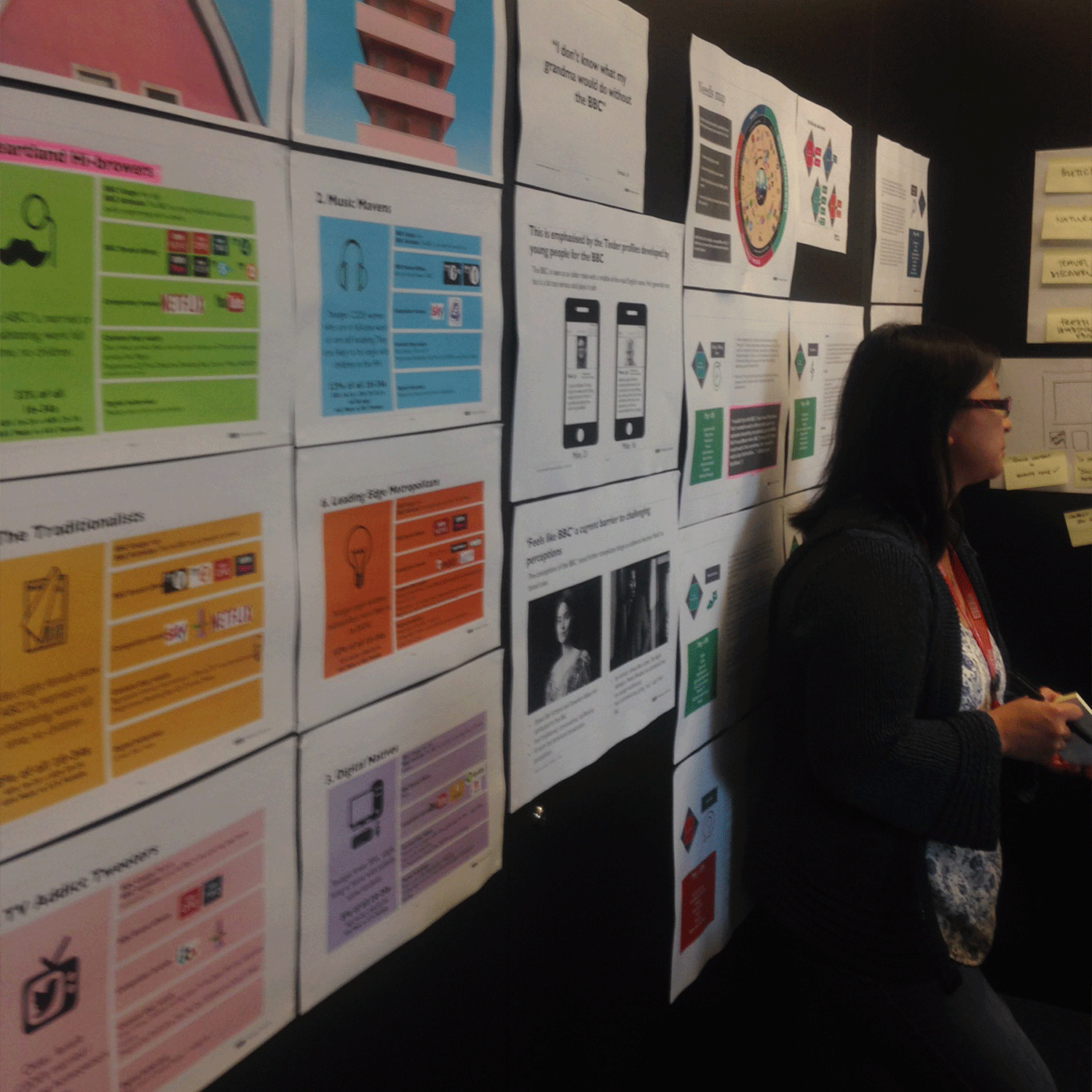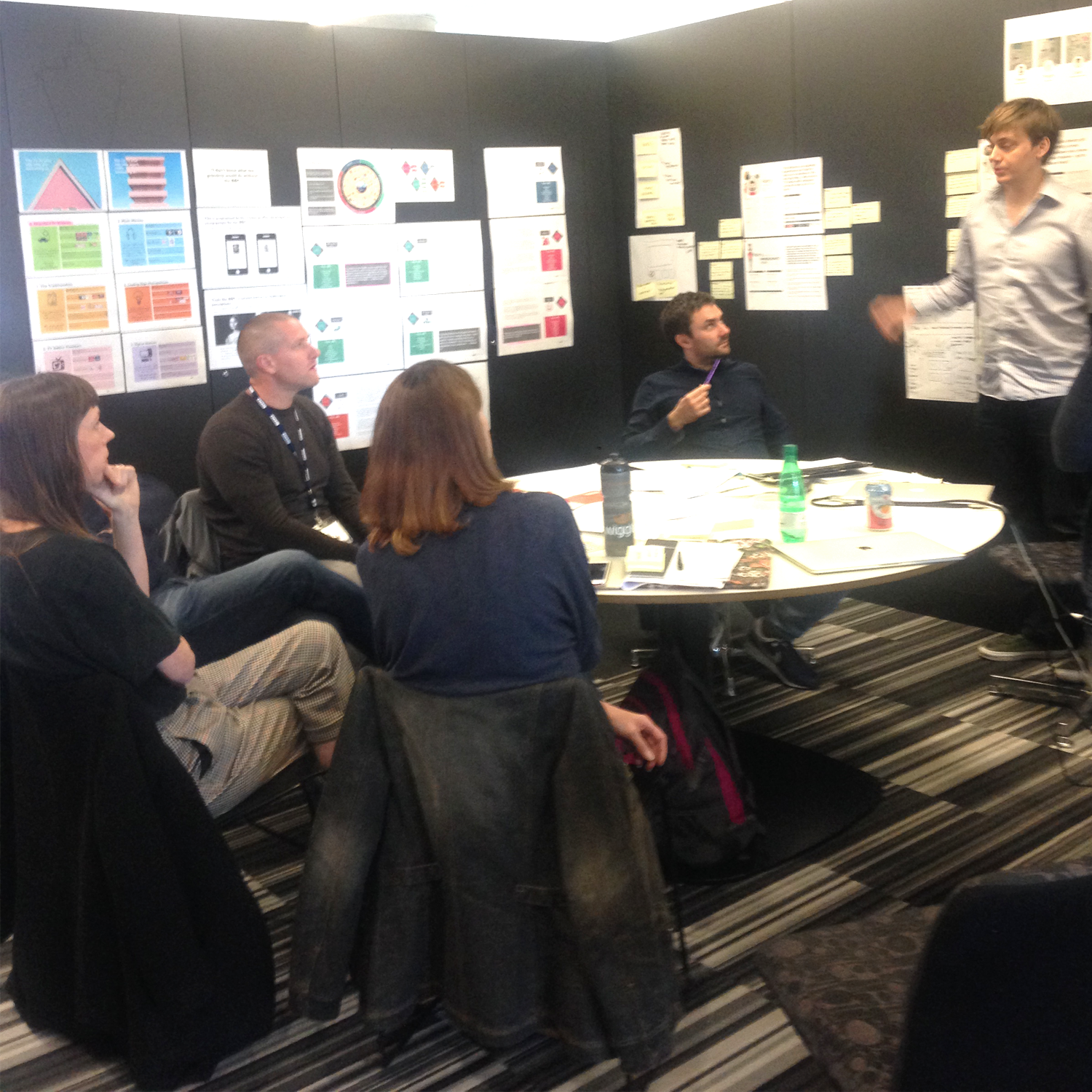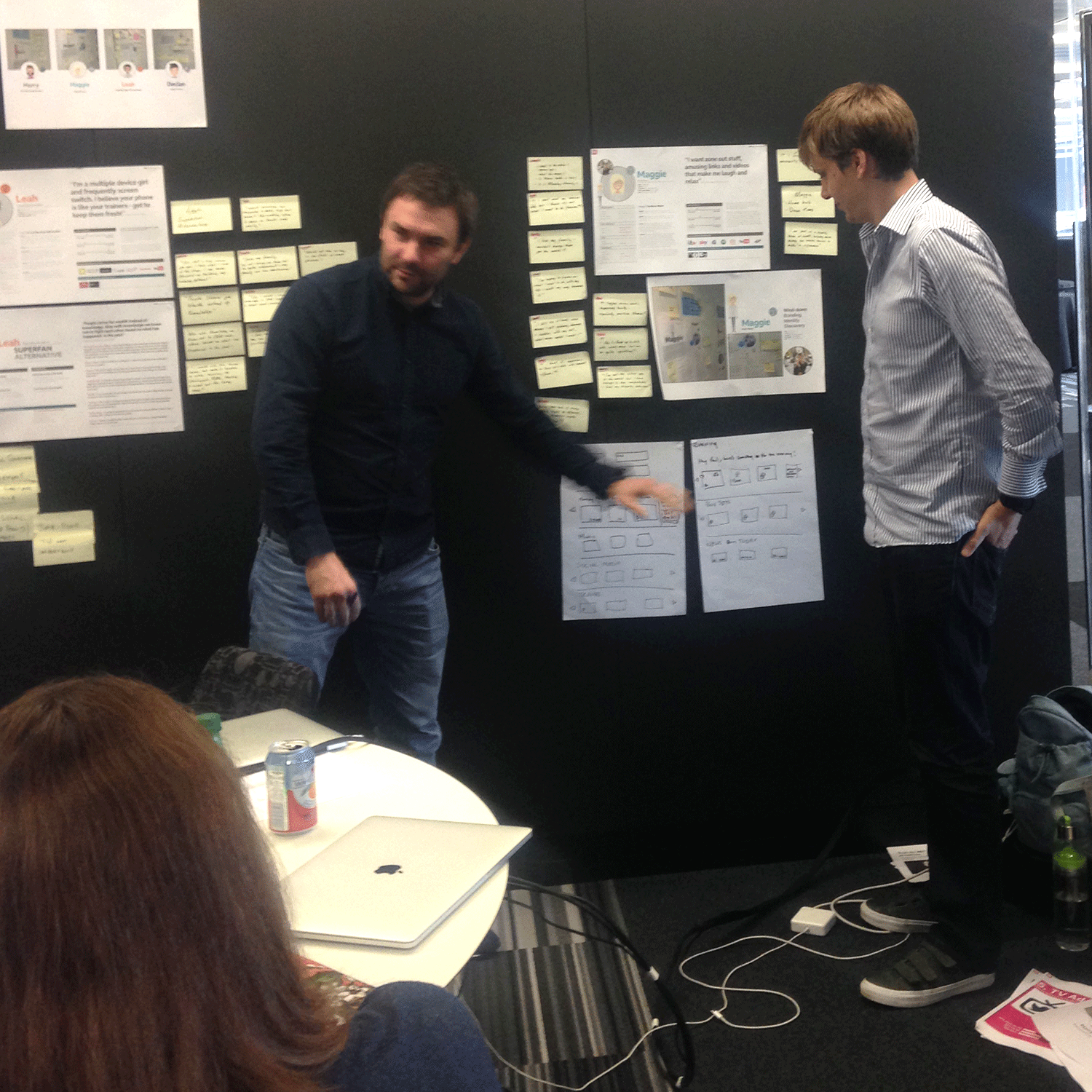Understanding and connecting with a younger audience.
Role: Research | Usability lab testing | Visual language | Workshop facilitation
THE CHALLENGE
BBC Three was struggling to connect with it’s core target audience (16-34 year old’s) and needed to understand why. It also needed to align it’s thinking across the content, product and key stakeholders to make sure both the content and the delivery was meeting the users needs.
THE OUTCOME
A combination of usability testing and in-depth analysis of existing research from across the BBC related to this audience was completed. We developed four user Personas and ran persona workshops to develop a shared understanding across the BBC Three team. Strategically there is a lot of focus on the under 35’s demographic across the business and recently our work has been picked up by M&A team (Marketing & Audiences) and used as the framework for a broader study pan BBC.
01_
User Research
Working closely with BBC Three’s UX researcher Selena Whitehead, we began collating and analysing data from 4 core sources to help us build a clearer understanding of this diverse and often hugely misunderstood 16-34 year old target audience.
LAB TESTING:
We conducted a Baseline round of user research and gauge feedback on the existing BBC Three website (look, feel, tone of voice, functionality, content, navigation, brand recognition etc ) We obtained qualitative data using Desirability card exercises, Al scores exercises and task-based discussion. Contextual enquiry included general media consumption, daily social media routines as well as trying to establishing what content generally interests them. Where, when and what do they do on weekday/weekends etc.
We had 14 participants (16-34 years old) in 60min lab sessions split across several days in both London and Salford.
M+A REACH REPORT:
Marketing & Audiences Youth Audience Story report. This report Identifies how the needs and sub-needs change over the age range of our audience. For example this age group share common needs such as the bonding and social acceptance.
SEGMENTATION REPORT:
A report by Richard Fero (Research Manager at BBC) enabled us to view this audience in terms of marketing segments.
DIARY REPORTS FROM ACROSS THE BBC:
We reviewed behavioural reports based on the diaries studies by other teams in the BBC, focussing on the diaries that were within our target age group.
Our key learnings from this research :
01_ Under 35’s appear to be content loyal but not brand loyal.
02_ Personalisation is a basic expectation.
03_ Comments and reactions are valued but created in a considered way by the younger groups.
04_ FOMO is an overriding theme that must be explored more.
05_ These users seem very forgiving of poor UX and UI
06_ They expect content to be filtered to their interests and use social media like a curation filter.
02_
Personas
We began this process by creating an “exploration wall” in the studio. This helped spot patterns and groupings which gradually formed into 4 distinct persona’s called Harry, Maggie, Lee and Tanya. Each persona includes goals, needs, interests and digital behaviours. We identified behavioural modes, pulled out quotes from the diary studies, and also identified brands that are already meeting this audiences needs, .
03_
Workshops
These Personas were very useful for the design team, however we also wanted to share this knowledge with the wider team. So we ran Persona workshops with the product team, key stakeholders and editorial staff. Our key objective was to develop a shared understanding of our audience.
Workshop tasks included re-designing the BBC Three homepage to meet the needs of a chosen persona, a Q&A session with a Persona (roleplaying) and we finished with an Ideas Board that included key observations, questions and concerns. All this opened interesting debate, got the whole team thinking about our users and also provided us with invaluable learnings and ideas for future research.
KEY LEARNINGS:
01_ All our personas would respond well to improving the user UI and adding features that support their individual needs.
02_ All our personas want quick access to content that is relevant to them.
03_ Increasing audience engagement is dependent on both content and delivery.
04_ They may not be brand loyal but they are loyal to content that they like.
05_ All personas prioritised constantly updated and “fresh” content
06_ The homepage experience needs to be visual experience (not text heavy)
07_ Trending is important because all our personas share a fear of missing out.
We still need to understand our audience more and always will. This is an ongoing piece of research that will evolve with our audience.





